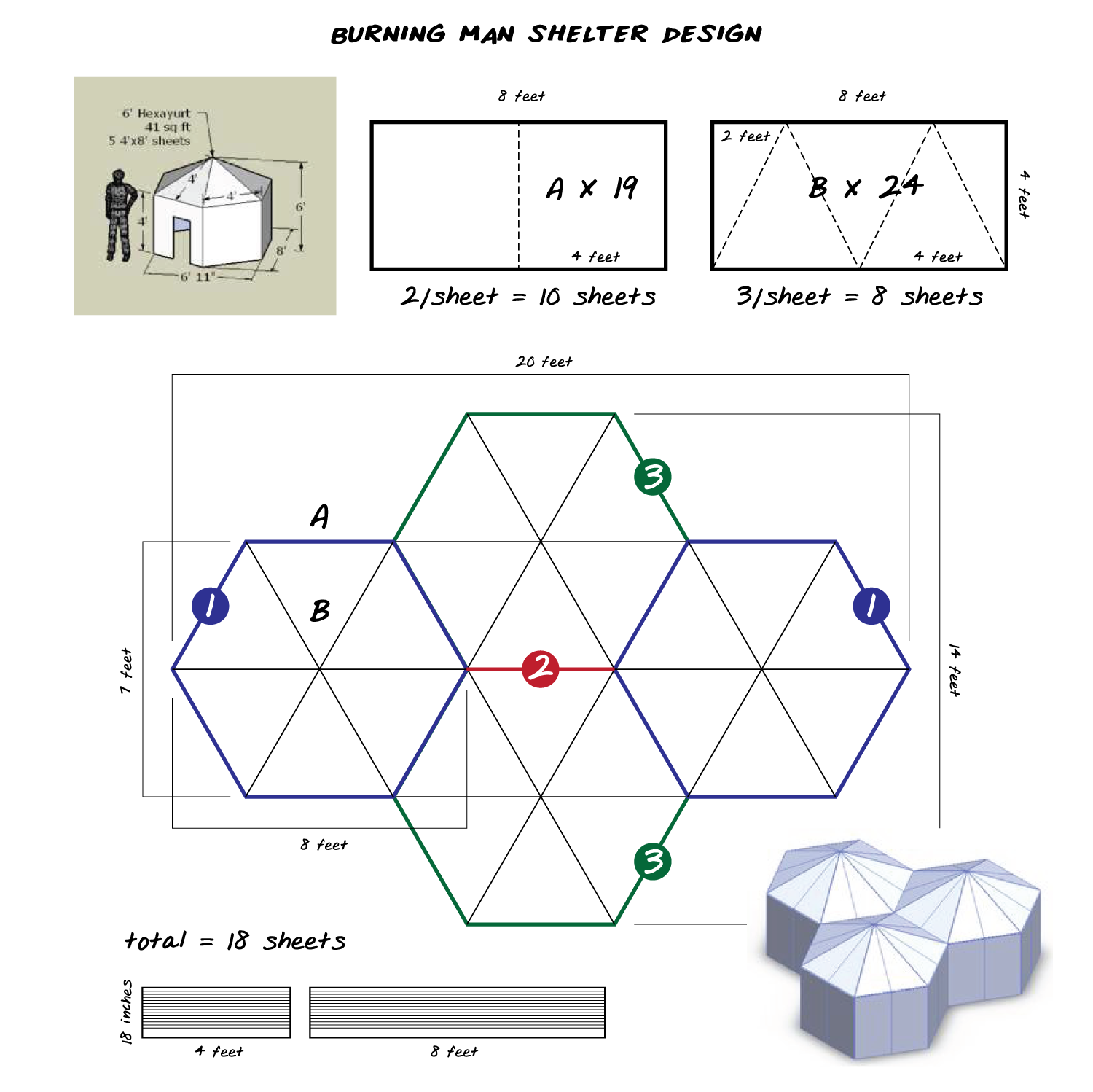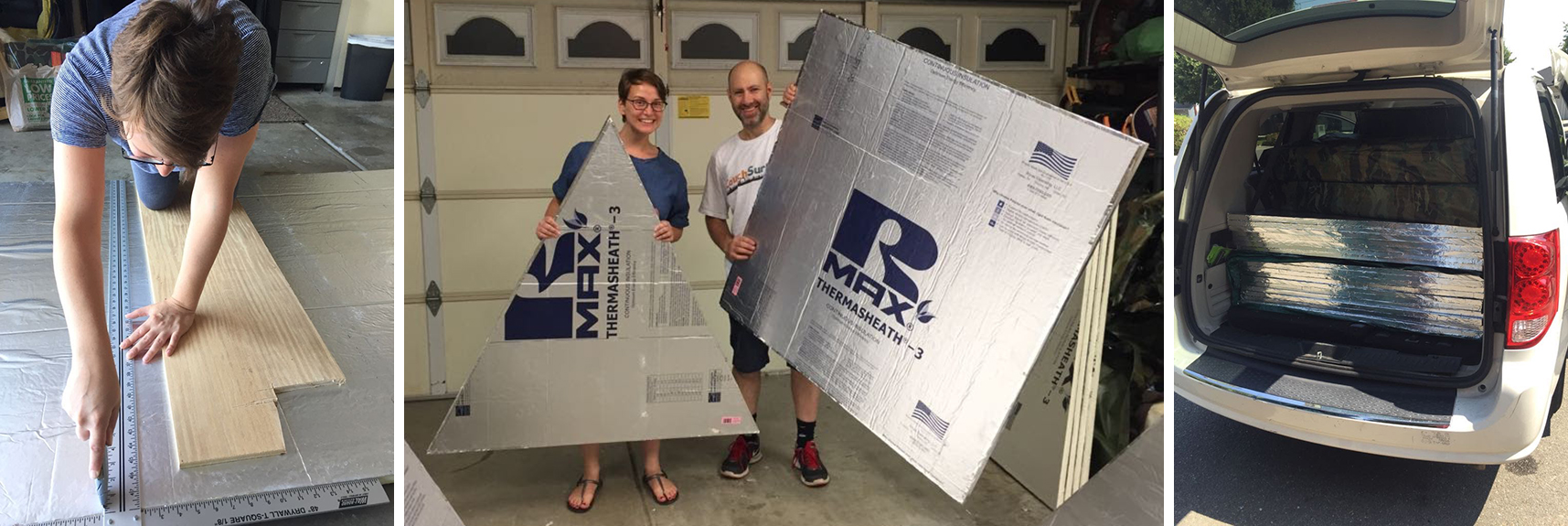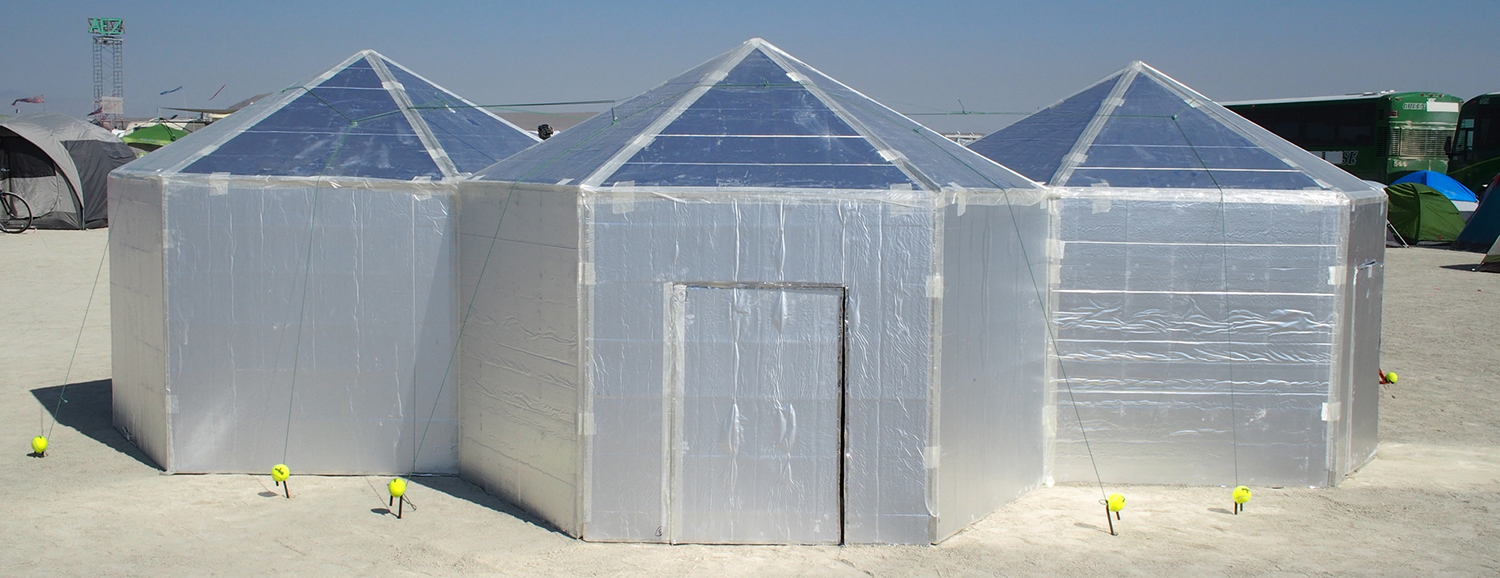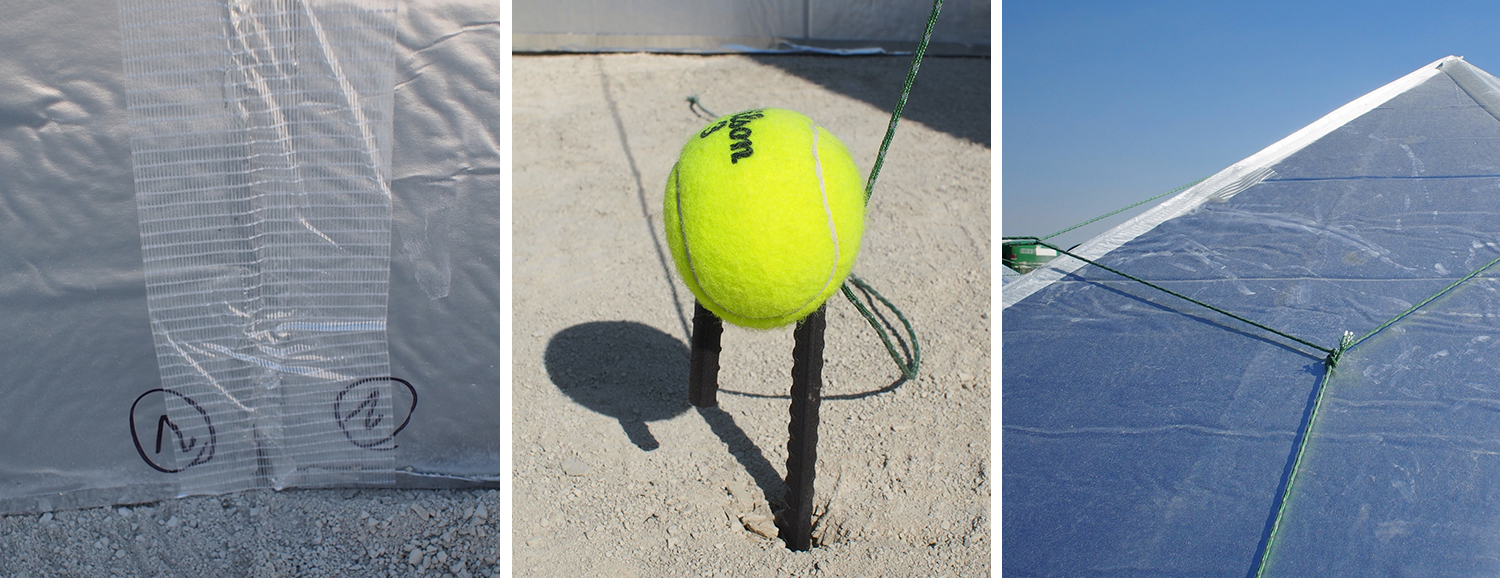The first time I went to Burning Man, my experience was made much more comfortable by fellow campers who had prepared temporary shelters and offered me a spare. Insulation from cold, reflection of sun, firm walls, and being able to stand up removed many of the common irritations of camping. When our group began planning for this year’s trip to the Burn, I wanted to give them the same level of comfort. I set out to design a structure that would provide all of those benefits and some privacy, while minimising the amount of construction materials we’d have to buy and transport.
The design I arrived at is based on the 6′ hexayurt, one of the many designs by Vinay Gupta. In order to reduce the amount of building materials required, I arranged them in a honeycomb layout. This saved us 4 sheets of 4’x8′ insulating foam and about a roll of filament tape. It could easily be expanded to incorporate more hexayurts, seemingly indefinitely (though it does make sealing much more difficult). Here’s the recipe.
 Preparation materials:
Preparation materials:
- 18 | 4’x8′ sheets of 1″ thick polyisocyanurate insulating foamboard, such as Rmax
- 4 | 50 yard roles of multipurpose foil tape at least 1.75″ thick, such as Nashua
- 1 | utility knife with at least 6 blades
- 1 | 4′ T-square
- Something long and flat to kneel on and distribute weight
We prepared the materials (cutting structural parts, cutting out doors, covering the raw edges in foil) before Burning Man. We followed the schematic in the image above to make A and B parts. I won’t get into the play-by-play, but we learned 3 useful things:
- A 4′ metal T-square significantly speeds up the cutting process
- Marking the matching doors and door frames saves time later
- All of the finished parts will actually fit into a Dodge Grand Caravan

When we arrived on the playa, we pulled out the rest of the materials and set to work.
Assembly materials:
- 3 | 60 yard roles of 3′ bi-directional filament tape, such as this
- 8 | rebar stakes, like these
- 8 |tennis balls (with slot cut to fit over rebar stakes)
- 4 | waterproof tarps, at least 7’x8′ each to place inside the shelters (also great for carrying the materials)
- 150 feet of nylon cord, for example 3 of these
 Most of the time and frustration-saving tips became relevant during assembly. I cannot stress enough how valuable it was to first use small pieces of tape to hold the structure together before using long, continuous pieces of tape to seal the structure. This way we could modify the spacing and readjust if the pieces didn’t line up quite right on the first try. Also, if you happen to have a friend that is 6’7″, bring them. We assembled the parts in this order:
Most of the time and frustration-saving tips became relevant during assembly. I cannot stress enough how valuable it was to first use small pieces of tape to hold the structure together before using long, continuous pieces of tape to seal the structure. This way we could modify the spacing and readjust if the pieces didn’t line up quite right on the first try. Also, if you happen to have a friend that is 6’7″, bring them. We assembled the parts in this order:
- Assembled all 4 roofs, made of 6 triangles each
- Put together 2 sets of walls, made of 5 squares and 1 door frame each (shown in blue and marked 1 on the diagram)
- Arranged the 2 sets of ‘blue’ walls 4′ apart (with door frames facing away from each other) and added the spacer wall (shown in red and marked 2 on the diagram)
- Assembled 2 sets of walls, made of 2 squares and 1 door frame each (shown in green and marked 3 on the diagram)
- Attached the last 2 sets of ‘green’ walls to the structure
- Attached the 4 roofs on top
- Sealed the completed structure with filament tape (the longest, continuous pieces of tape manageable)
- Made 4 sets of tape hinges for the doors
- Tied 4 loops of nylon cord together to make a crown, which we then attached to rebar stakes in the ground
And here’s the result, our very own honeycomb hexayurt village:


The list of potential failure points makes me cringe even now:
- Designing the shelter accurately
- Estimating material quantities correctly and availability of material stock
- Coordinating timely material delivery
- Preparing the materials accurately and without wastage
- Fitting the prepared materials into the Caravan and RV (our methods of transport)
- Ensuring the materials were dropped off at our camp
- Assembling for the first time in the dark (with no prior experience)
Anyone considering replicating this design might want to do a better job of reducing the possible points of failure. Nonetheless, during one of the hottest Burns on record, we stayed surprisingly cool!
